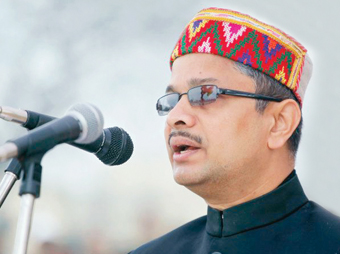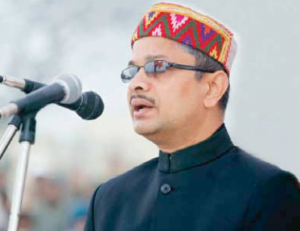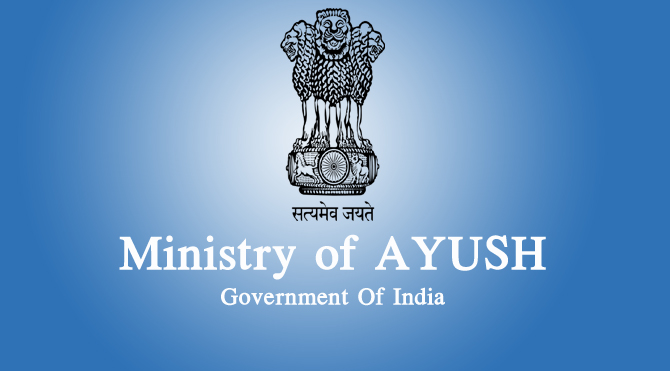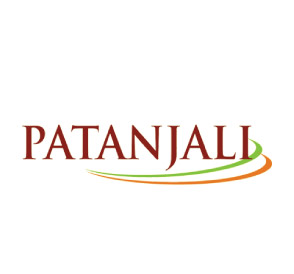
 Through effective implementation of various schemes, Uttar Pradesh is trying to improve its healthcare delivery services. Mukesh Kumar Meshram, Mission Director (NRHM), Government of uttar Pradesh, in this freewheeling interview with Dhirendra Pratap Singh, shares his perspectives on various healthcare issues in the state.
Through effective implementation of various schemes, Uttar Pradesh is trying to improve its healthcare delivery services. Mukesh Kumar Meshram, Mission Director (NRHM), Government of uttar Pradesh, in this freewheeling interview with Dhirendra Pratap Singh, shares his perspectives on various healthcare issues in the state.
What are the innovative programs implemented in collaboration with USAID over the years in Uttar Pradesh? How has this partnership helped in changing the health scenario in the state?
Innovations in Family Planning Services (IFPS) Project was designed by USAID in collaboration with Government of India to revitalise the family planning programme in UP by introducing innovative approaches and mainstreaming successful interventions. IFPS project was started in 1992 and continued till March, 2012 having been implemented in three phases. In 1993 IFPS project created an autonomous body called the State Innovations in Family Planning Services Agency (SIFPSA) to implement IFPS project.
An initiative was taken to strengthen and upgrade public healthcare facilities for provision of quality FP services. This initiative focused on strengthening various aspects of the government healthcare facilities. Up-gradation of the facilities led to improved access to quality FP services and an enabling environment was created for the service providers.
Recognising it, GoI introduced the concept of first referral units (FRUs) and 24 hour functional units for providing round the clock delivery services and newborn care under the RCH II program.

How do you propose to bring down the MMR, IMR and Total Fertility Rate (TFR) in the country?

People in India should have access to the basic requirements of life: a balanced diet, clean water, decent shelter, and adequate clothing. As the 21st century proceeds, it will become increasingly difficult to meet these basic needs, especially in states that have not achieved population stabilisation. Population growth is of concern regardless of where specifically it is occurring. As our numbers are rapidly increasing, environmental degradation, hunger, persistent poverty, economic stagnation, urban deterioration, and health issues will continue to challenge us in Uttar Pradesh. Currently, we have highest TFR among all states in India at 3.8, except Bihar. Although, according to the NFHS-3 report for Uttar Pradesh, TFR declined from 4.8 children per woman in 1990“92 to 3.9 in 1996“98 and to 3.8 at 2005-06, but rate of population growth is still very high at 16.16 percent.
If rate of population growth continues at the same pace, Uttar Pradesh will double its populations by the year 2045 from the base of 2001 population. Many demographers consider rapid population growth of the poor to be the most urgent population problem. Various government schemes introduced in UP to address the issue to TFR, wherein sterilisation campaign is among the prominent one and implemented as part of the national programme. IEC activity addressing and sensitising the masses over the benefits of small family, delayed marriage and birth spacing was done but the outcome was not achieved as it would have been. We are still adding almost a district every year in terms of population.

How do you see the involvement of Panchayati Raj Institution in effective healthcare delivery in Uttar Pradesh?

IFPS project considered PRIs ideally suited for implementation of RCH programme and integration of services at village level and imparted training to pradhans to make them aware of various health programmes, particularly RH and FP and encouraged them to promote healthcare seeking behavior among villagers and implementation of health activities in villages. The training and orientation led to greater interest and involvement of pradhans in RCH services. PRI interventions helped to build supportive environment for RCH activities.
One of the core strategies of the IFPS Project was to equip human resources in the health sector in UP, engaged in implementation of program interventions at different levels with requisite knowledge and skills, and to create an enabling environment to practice these skills leading to an improved program performance.
What kind of re-engineering is needed for effective implementation of Information and Communication Technology (ICT) in healthcare?
Presently there is a vast nationwide public healthcare infrastructure already established in our country. This infrastructure can be fortified by augmenting them with ICT technologies and services to address primary healthcare more effectively. Apart from the public sector we have a large and diverse private/NGO sector addressing healthcare delivery considerably. It is pertinent and important to take this into consideration in identifying the ICT requirements for strengthening primary healthcare such that the same may be suitably adapted in different settings with minimal changes.
Presently the focus on healthcare is mainly on curative medicine. It is important to take a holistic view and address promotional, preventive and curative healthcare. This needs to be further emphasised, especially in the private sector to ensure that the private/NGO sector participates more effectively in preventive and promotive healthcare for the healthcare programme to be effective.The healthcare delivery models could be different in different regions of the country based on the local actors. It is necessary to take cognizance of this factor in designing solutions.
What are the challenges in deploying new technology in health sector?
A set of guidelines for use of ICT for primary healthcare has to be developed which will go a long way in optimally leveraging existing technologies, while ensuring its continuity to the evolving and advancing technical innovations.
There is necessity of delivering cost effective solution for ICT based healthcare delivery at primary level and indigenous enterprise for providing software or hardware for e-health programmes.
A set of standards and guidelines on ICT for primary health care have to be defined, that will help in attaining the goal of providing all people with a practically attainable standard of healthcare, which is sustainable in an integrated manner. The use of ICT in health projects will improve awareness and ensure capacity building for societal benefits.
| A set of standards and guidelines on ICT for primary health care have to be defined, that will help in attaining the goal of providing all people with a practically attainable standard of Healthcare. |
How do you see the role of clinical training to healthcare providers and strengthening of infrastructure?
Clinical training needs of health staff were identified. Findings indicated that training centers lacked self-contained facilities; unavailability of training materials or equipment, outdated clinical guidelines and less attention to infection prevention practices.
To strengthen the training infrastructure in a decentralised manner, divisional clinical training centers (DCTCs) were created at 10 divisional level district women hospitals. This approach reduced the work load of the medical colleges on one hand and facilitated increased participation of staff.
How much public-private partnership model is workable in the health sector in Uttar Pradesh?
We have started Sambhav voucher scheme in PPP model. The main objective of the voucher scheme was to provide the pre determined family planning and MCH services through voucher for BPL and poor families in accredited private health facilities for providing quality MCH and family planning services. Survey showed that ANC checkups increased from 17.5 percent to 34.3 percent, institutional deliveries increased from 22 percent to 30 percent.
Similarly, Merrygold Health Network is an innovative Social Franchising Program being implemented since 2007 for private sector health service providers for providing essential health care services including high quality maternal and child health services at affordable prices.
Be a part of Elets Collaborative Initiatives. Join Us for Upcoming Events and explore business opportunities. Like us on Facebook , connect with us on LinkedIn and follow us on Twitter , Instagram.
"Exciting news! Elets technomedia is now on WhatsApp Channels Subscribe today by clicking the link and stay updated with the latest insights!" Click here!
















